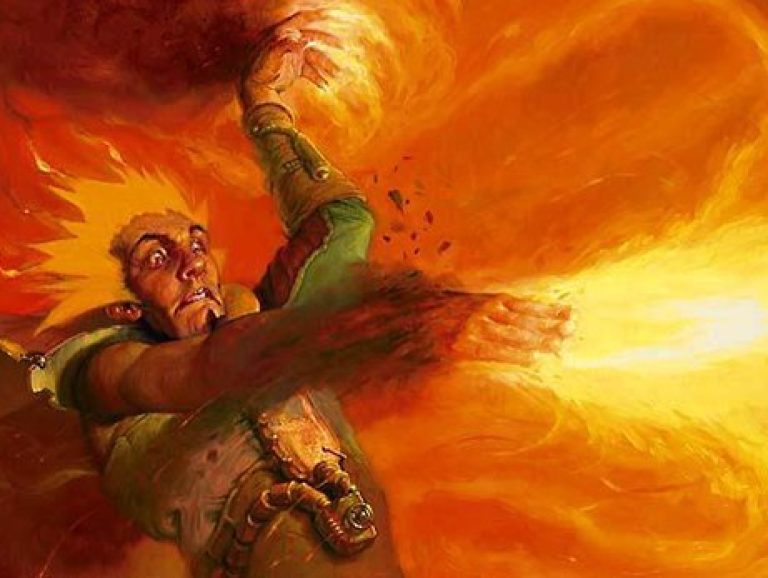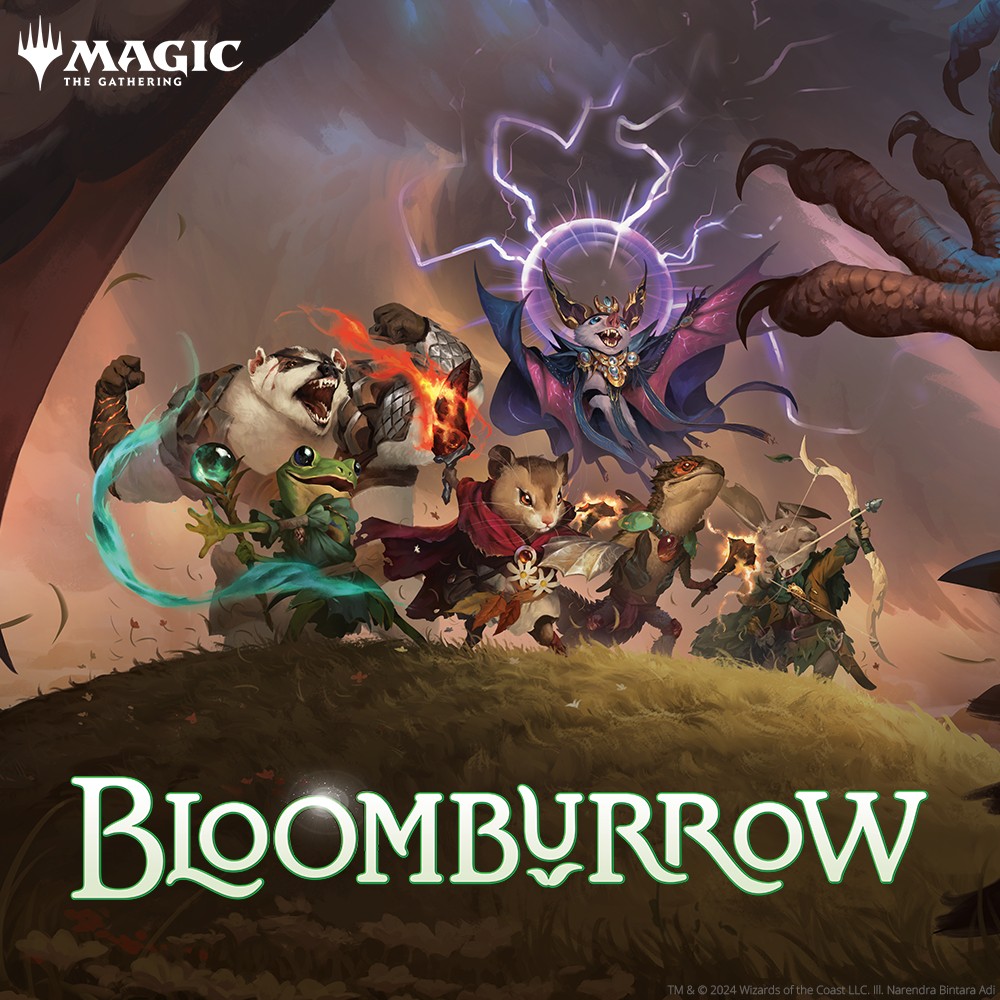Welcome back to Going for the Gold!
Today we continue our series on improving as a Magic player as we talk about probability.
Those of you who are statistically challenged are probably wondering what I mean by probability?
Probability is defined as the the likelihood of something happening or being the case.
The Example of the Coin:

Whenever there's a discussion on probability, everyone always refers to one of the most used examples: a two sided coin, one side being heads and the other being tails.
When you flip a coin, the chance of it landing on either side is always 50%. Now, it is definitely possible to flip the coin 20 times in a row and always see it land on tails, something that Mana Clash tries to sell you on.
But what if you flip two coins? What is the probability that both will be tails?
To calculate this, you first have to take the probabilities of each event happening in isolation, then combine them. Each coin has a 50% chance that it lands on tails, which means that you have a 25% chance (calculated by multiplying the probabilities 50% with 50%) that they will both land on tails.
Applying this to Magic:
This is a pretty simple concept and Magic is subject to variance, since we never know what the exact distribution of our deck is. This makes being able to calculate odds a very important skill. Before we dive any further, let's get into a quick and easy example:
You are on the play with a 17 land deck in Ixalan limited. You draw your seven cards, and see two lands in your hand but you need three lands to ensure that you can cast your entire hand. Should you keep? Let's look at the probability of drawing a land by your third turn.
Well assuming you're playing a 40 card deck, that means that you have 14 lands left in your 33 card deck.
The odds of NOT drawing a land on your first draw are 18 (the number of spells left in your deck) / 33 (total number of cards) = 54.5%
The odds of you NOT drawing a land on your second draw as well are 17 (one less spell since you drew it last turn) / 32 = 53.1%
If you combine both situations (54.5% of 53.1%), 28.9% of the time you will not draw a land on either turn 2 or 3, which conversely means that 70.2% of the time you will draw a land. In that case, you should keep.
What about the following hand?
[one_fourth responsive="stack"]
[/one_fourth]
[one_fourth responsive="stack"]
[/one_fourth]
[one_fourth responsive="stack"]
[/one_fourth]
[one_fourth_last responsive="stack”]
[/one_fourth_last]
[one_fourth responsive="stack"]
[/one_fourth]
[one_fourth responsive="stack"]
[/one_fourth]
[one_fourth responsive="stack"]
[/one_fourth]
[one_fourth_last responsive="stack"]
[/one_fourth_last]
This is an Hour of Devastation Draft where you are playing 10 Mountains and seven Islands. Would you keep this hand on the play?
The first thing to ask yourself about this hand is what will let you unlock your cards? Well, drawing any land will help you cast Open Fire and Minotaur Sureshot, but ideally you will draw an Island by turn three.
There are only seven Islands in your deck and 33 cards from which they can be drawn.
The odds of NOT drawing an Island on your first draw are 26 (the number of non-Islands left in your deck) / 33 (total number of cards) = 78.78%
The odds of you NOT drawing an Island on your second draw as well are 25 (one less non-Island since you drew it last turn) / 32 = 78.125%
This means that by turn three the chances you have an Island are 38.5% (The inverse of drawing two non-Islands 61.5%). These are not good odds, and if the cards in your hand are only blue cards then I would strongly advise against keeping this hand. However, as you know from above, the odds of drawing any land here are 70.2% which means that you'll be able to at least cast the two three-mana red drops. For this reason I would keep.
Now let's take the above hand and change a few cards:
[one_fourth responsive="stack"]
[/one_fourth]
[one_fourth responsive="stack"]
[/one_fourth]
[one_fourth responsive="stack"]
[/one_fourth]
[one_fourth_last responsive="stack”]
[/one_fourth_last]
[one_fourth responsive="stack"]
[/one_fourth]
[one_fourth responsive="stack"]
[/one_fourth]
[one_fourth responsive="stack"]
[/one_fourth]
[one_fourth_last responsive="stack"]
[/one_fourth_last]
As you've seen before, since you will only be able to cast a card in your hand 38.5% of the time by turn three, then you should mulligan unless you know that your opponent is not going to be very aggressive. This is a very useful skill to have since instead of mulliganing based on feel, you can do it based on the composition of your deck. Just make sure that you get used to doing these calculations on the fly; even if they aren't exact, they give you a feel for the probabilities.
I would suggest memorizing the probabilities of the most basic calculations. Remembering what the odds are of drawing a land by turn two or three in a 16 / 17 card deck comes in handy in high pressure situations. This is a skill that I picked up in poker, where I know what the various odds of some of the most basic draws are, like the odds of flopping a flush draw, odds of flopping a set with a pocket pair, etc. Without knowing these, I would be incorrectly making a lot of my pre-flop decisions. This is no different.
Let's take another example from the semi-finals of Pro Tour Honolulu 2005.

Craig Jones is battling Olivier Ruel in game five and it has come down to the wire. You can watch the exact situation unfold here.
Craig is playing a Zoo deck that boasts the following direct damage spells after sideboard: Shock, Lightning Helix, Guerrilla Tactics, and Char. I'm going to assume he took out Flames of the Blood Hand since it didn't really have much of a place in this attrition matchup. Craig is at six life and is being attacked for three unblockable damage, while Olivier has two Plagued Rusalkas holding down the fort while he sits at seven life.
He looks at his hand, sees a Char and realizes that he probably can't win if he kills the Hand of Cruelty attacking him. He only has five lands on the field, so this complicates the play even further. Let's look at his outs:
4 Lightning Helix
3 Char
Really, that's it, because Shock and Guerrilla Tactics won't kill Olivier in combination with the Char. It looks like we are on turn eight of the game so let's assume that there are 46 cards left in Craig's deck.
The odds of him drawing a Lightning Helix are 4/46 = 8.7% (this wins the game and match for Craig)
The odds of him drawing a Char are 3/46 = 6.5% (this draws the game for Craig but puts him back on the play which makes him more likely to win the match)
So about 15.2% of the time, Craig is able to NOT lose. However, since he doesn't have six lands on the battlefield, he must cast choose to cast Char before he untaps otherwise he will lose 6.5% of equity. This is why you see Craig sigh and cast Char at the end of his turn. In the end, they make a big show of it and Lightning Helix shows up and finishes Olivier off.
Mike Flores argues that Olivier should have attacked with all of his creatures and if Craig was a worse player, it likely would have forced Craig to use Char on the Hand of Cruelty. We will never know.
If there's anything that you took away from this article is that doing the math on the probability of outs will definitely improve your game.
Post in the comments below or tweet at me (@SammyTMTG). And, if you want to keep up with my articles and happenings, please make sure you hit the follow button for Twitter @ SammyTMTG. I’ll see you next week for another article on improving your magical skills! Until then, have a great weekend!
Sammy T


